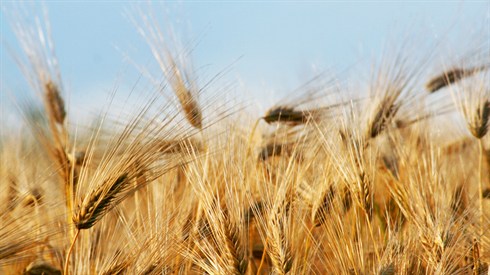436
12.Other Utensils
Silver goblets:It is proper, le-khatĥila, to perform hagala on silver goblets used for kiddush wine and other hard drinks, because crumbs sometimes fall into the goblet along with these strong drinks, which, according to some poskim, causes their taste to be absorbed into the goblet after eighteen minutes (as explained above 10:14).
Plastic baby bottles:It is better to replace them because they absorb tastes at a level of irui from a kli rishon. When necessary, one may clean them and perform hagala.
Electric water heaters, urns, samovars, and hot water kettles must undergo hagala, because ĥametz crumbs may have fallen into them, causing their taste to be absorbed. Hagala in this case means filling the device to the top with water, boiling it, and then pouring it out through the opening generally used to dispense the water. Before hagala, it is good to clean out the stone deposits that accumulated inside. If one puts challah loaves on the lid of the urn to warm them before the Shabbat meal, hagala should be performed on the kettle and its lid. 9
Thermos:After cleaning it properly, hagala should be performed on it. If this is difficult, pouring boiling water into it and around its opening is sufficient.
Toaster:This requires heavy libun, and since it is liable to be damaged in the process, it should not be koshered.
Kneading Utensils:Rema maintains that such utensils le-khatĥila require light libun, but since they are likely to be damaged, they should not be koshered (451:16, 17). According to Shulĥan Arukh, it is possible to kosher them via hagala. Le-khatĥila, the custom is to be stringent, in keeping with Rema’s ruling (Kaf Ha-ĥayim 451:196, 263).
False Teeth:These should be cleaned thoroughly before the onset of the ĥametz prohibition. They need not undergo hagala, because people do not normally put boiling foods or liquids in their mouths; just as they are used for both meat and dairy when cleaned in between, so can they be used on Pesaĥ. Some believe that due to the gravity of the ĥametz prohibition, they must be koshered in a kli rishon or kli sheni. 10
13. Earthenware and Porcelain Utensils
If earthenware absorbs ĥametz hot, even via a kli sheni, hagala is not effective. Although libun would effectively burn the taste absorbed in the utensil, the Sages forbid koshering earthenware utensils through libun because there is concern that they will crack (see above 10:7). If used cold, however, one may kosher them by washing them thoroughly. If a ĥametz beverage was allowed to sit in such a vessel for twenty-four hours, one may kosher it by soaking it in water for three consecutive days (ibid. 14).
China, clay, and ceramic utensils are considered earthenware.
Regarding porcelain which, though made like earthenware, has a smooth surface like glass, most poskim maintain that it has the status of earthenware, and there is no way to kosher it. This is the halakha (MB 451:163; Kaf Ha-ĥayim ibid. 305). However, some poskim believe that since the surface of porcelain is smooth like glass, it does not absorb at all. When there are additional doubts, their lenient opinion is taken into account. 11
14.Glassware
Leading Rishonim take diametrically opposed positions regarding the status of glass utensils.
According to Rabbeinu Tam, Rosh, Rashba, Ran, and many others, glass is smooth and hard, and even if it had been used to hold boiling hot foods, it does not absorb their tastes. Therefore, even if glass utensils were used with boiling-hot ĥametz throughout the year, they may be rinsed thoroughly and used on Pesaĥ. This is the position adopted in SA 451:26. Similarly, glass utensils may be used alternately for hot meat and hot dairy foods, as long as they are cleaned well in between.
According to Smag, Smak, Mordechai, Agur, and Terumat Ha-deshen, glass, because it is made of sand, has the status of earthenware, which is also made of sand and which absorbs tastes but does not release them. Therefore, if one uses glass utensils with hot ĥametz foods, there is no way to kosher them for Pesaĥ. This is the position adopted by Rema.
There is also a third position, which maintains that glass utensils have the same status as metal utensils, which can absorb and release when boiling hot. However, since glass utensils are fragile and liable to break during hagala, there is no way to kosher them for Pesaĥ (Or Zaru’a, Shibolei Ha-leket).
In practice, many Sephardim follow Shulĥan Arukh’s opinion that glass utensils do not absorb and thus may be rinsed thoroughly and used on Pesaĥ. However, there are important Sephardic authorities who are stringent in this regard, Ben Ish Ĥai among them (Year One, Tzav 14).
In Ashkenazic communities, some follow Rema’s stringent ruling while others adopt the middle opinion, allowing glass to be koshered via hagala on the grounds that today’s glass is stronger than in the past and capable of enduring hagala. There is even more of a tendency to be lenient with tempered glass cookware (like Pyrex), which is fire resistant. Some rule that hagala should be performed three times on glassware.
In practice, Ashkenazic Jews do not kosher glass utensils for Pesaĥ through hagala, in keeping with Rema, and only under pressing circumstances rely upon the lenient position. With regard to prohibitions other than ĥametz, the tendency is to rely upon the lenient poskim, waiting twenty-four hours from when the utensil last contained hot food and performing hagala three times. 12
15.Enamel Utensils
Enamel utensils are made of metal and coated with a thin layer of enamel for aesthetic reasons. The inside of the pot is usually colored white, while the outside is decorated with different colors. Enamel is made of sand like glassware, but it is processed differently. Great uncertainty arose regarding such utensils. At first, poskim were uncertain because the craftsmen kept enamel’s composition secret. Then, when it became known that enamel is made of sand, uncertainly arose again as to whether such utensils have the status of earthenware.
In practice, the poskim rule that one may perform hagala on enamel utensils like all other metal utensils, and some recommend performing hagala three times. Yet regarding Pesaĥ, some instruct not to perform hagala on enamel utensils in light of the severity of the ĥametz prohibition. 13
16.Plastic Utensils
Plastic utensils that have absorbed the taste of boiling hot food are koshered via hagala with boiling water, like all other utensils. This is true of all types of metal, such as silver, copper, iron, aluminum, etc., as well as utensils of leather, wood, and bone. It is earthenware alone that the poskim say cannot be koshered, because, due to its unique composition, it is very absorbent, but does not release all that it absorbs. And some poskim say that glassware has the same status as earthenware.
However, Igrot Moshe (OĤ 1:92) states that one should not perform hagala on utensils made of plastic or other synthetic materials not mentioned by the Rishonim, since such materials might be like earthenware, which does not release what it has absorbed. Nonetheless, the overwhelming majority of Aĥaronim agree that hagala is effective on plastic utensils, and this is the halakha. Utensils made of hard plastic are koshered through hagala in a kli rishon on the flame, whereas plastic utensils that are liable to be damaged in a kli rishon on the burner can be koshered at the same level they absorbed the ĥametz. 14

How Does a Heter Iska Work?
Rabbi Yirmiyohu Kaganoff | 5770

A Layman's Guide to some Halachic Aspects
Rabbi Yirmiyohu Kaganoff | 5773

A Layman's Guide to some Halachic Aspects
Rabbi Yirmiyohu Kaganoff | 5773

“Ba’omer” or “La’omer”?
Rabbi Daniel Mann | Iyar 4 5777
Daf Yomi Makkot Daf 11
R' Eli Stefansky | 21 Nisan 5785
Daf Yomi Makkot Daf 8
R' Eli Stefansky | 18 Nisan 5785








